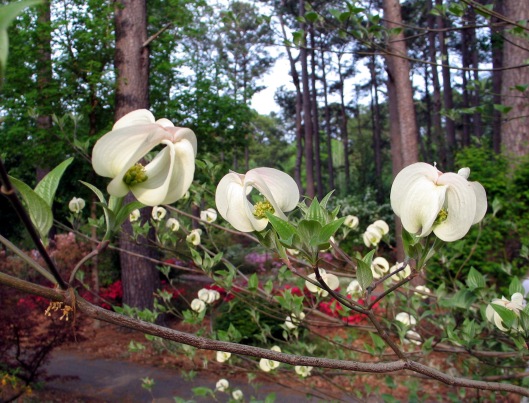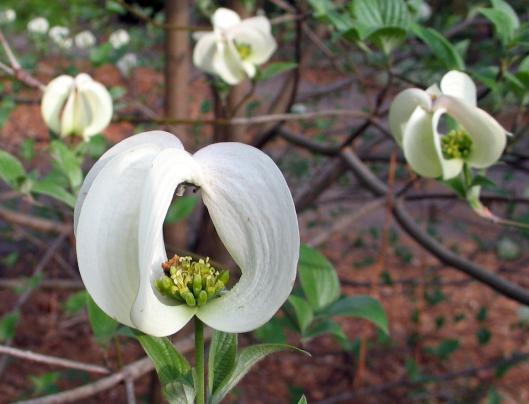Figs are old, odd and other worldly. It’s a big genus. Depending on your source, there are 1000+ Ficus species. Figs around humans are an old story and predate the fossil record of wheat, barley and rye. Enthusiasts think they are the first record of Agriculture. The worst of this lot are convinced that it was a fig that Eve used to seduce Adam, not an apple. After all, apples weren’t common in the ancient paths near Jericho. Figs were. Shouldn’t we all agree that Eve and Adam covered their shame with fig leaves?
Most figs are tropical jungle plants but some edge their way into territories that facing freezing temperatures. In the modern world, they are common as houseplants. From giant banyan trees of Asia to houseplant staples to small leafed groundcovers, Ficus wins. Only two species might be considered major food crops. Ficus sycomoro (a long term fail at SFA Gardens), and then there’s F. carica (the common edible fig).

Fig plots at SFA Gardens
TYPES OF FIGS:
Figs are complicated. The fruit we eat is actually a flower inside a structure called a syconium with male flowers above the female with pollen spread by a wasp who enters the structure through a hole called an ostiole.
Caducous — Smyrna figs: Need to be pollinated to mature fruit. Without pollination the fruit will drop before it matures. Smyrna figs must be grown in the presence of Caprifigs and pollinating insects to bear fruit.
Intermediate — San Pedro figs: Do not need to be pollinated to set a breba (first) crop but do need pollination to set the main crop.
Persistent — common figs: Do not need to be pollinated to bear fruit. This is what is referred to as the common garden fig.
VARIETIES – SFA Gardens is in the early stages of a large variety trial. We are working with Allen Owings at the LSU Hammond station to create a duplicate germplasm repository of varieties and to evaluate their performance over many years.
 Fig collection at the SFA Gardens
Fig collection at the SFA Gardens
LSU recommends Brown Turkey, Texas Everbearing, Black mission, Alma, Celeste, Kadota, Blue Giant.

King Arthur
PLANTING – Choose a well drained site. Spacing at not less than 16’ apart – can have various configurations. While figs appreciate moist soil, waterlogged conditions are not good. A surface or subsurface drainage system, berms or raised beds may be a good idea. Plant in the early spring in East Texas. We like to plant big healthy one to three gallon plants . After planting, mulch lightly with pine bark, straw or other matierials.
IRRIGATION – Critical to good plant growth in most sites. We use daily drip, one emitter per plant on young plants, multiples on older plants. Ours are ½ gph emitters and a couple of hours per day and off on rain days.
FERTILIZATION – In most soils, a complete fertilizer spread lightly every month or two in a circle around the plant, and well away from the crown of the plant is prudent. Young plants respond to Nitrogen. Soil tests will indicate the need for P, K or other elements.
PRUNING – We lean to a minimalist approach. Never prune until after the winter when you can see what was knocked back and what is still alive. Remove the dead wood only, except perhaps to cut back low hangers and on the ground branching which will provide an unobstructed view of the base of the plant – for chemical weed control applications, mainly.
DISEASES/INSECTS – Very sandy well drained soils may be a nematode problem. In some years, rust can be difficult. Birds, critters and friends can take out a crop quick.
PROPAGATION – Easy by cuttings. June July and Aug cuttings under mist root quickly. Hardwood cuttings stuck in well drained circumstances and kept moist root well most winters. I used to tell students that if they couldn’t root a fig they needed to change majors.
FREEZE PROTECTION – Hard winter freezes are the big problem. Single digit events can take figs back to or near the ground. If just a few trees, packing mulch, pinestraw, and any other insulating materials into a ring around the tree helps. Homeowners can position trees on the South side of heated buildings to get some relief from low temps.













